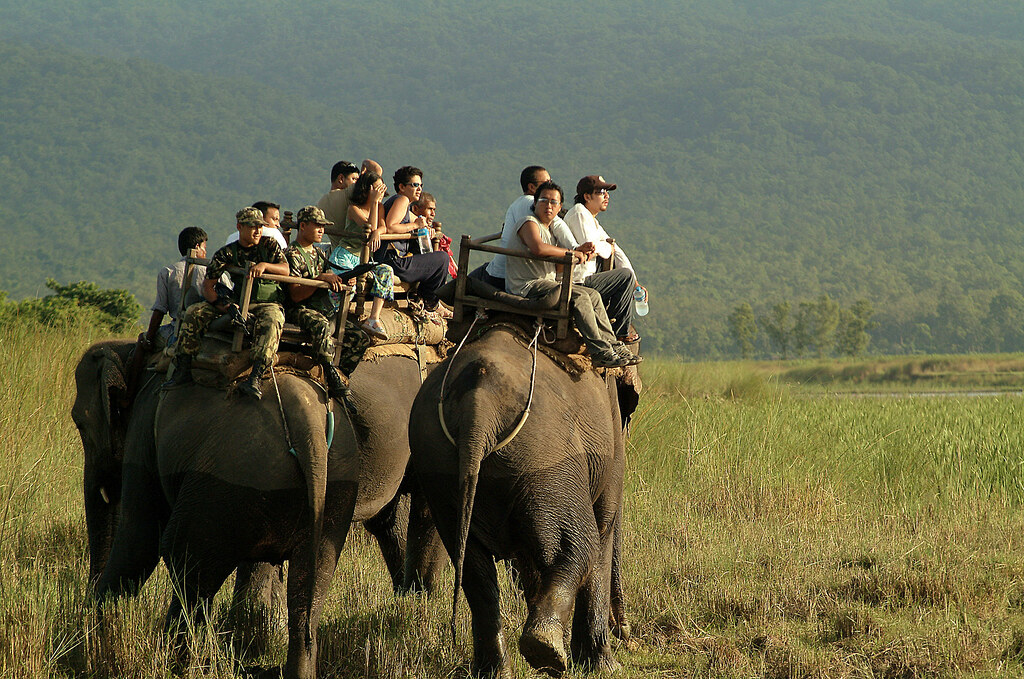http://e-info.org.tw/node/205176?utm_source=%E7%92%B0%E5%A2%83%E8%B3%87%E8%A8%8A%E9%9B%BB%E5%AD%90%E5%A0%B1&utm_campaign=ad4b63215f-EMAIL_CAMPAIGN&utm_medium=email&utm_term=0_f99f939cdc-ad4b63215f-84956681
聯合國:全球野生動物的未來 命懸永續旅遊
摘譯自2017年5月23日ENS加拿大,魁北克,蒙特婁報導;姜唯編譯;蔡麗伶審校
生物多樣性和旅遊息息相關。觀光旅遊業是全球最大、發展最快的產業之一,佔全球GDP的1/10,提供全球1/10的工作機會。
瀕危野生動植物種國際貿易公約(CITES)秘書長史坎倫(John Scanlon)在4月第17屆曼谷世界觀光旅遊理事會全球高峰會上表示:「野生物維繫我們的生存,但是牠們的命運卻掌握在我們手中。我們決定了全世界野生物的命運,也決定了自己的命運。」
今年的國際生物多樣性日(5月22日)即以生物多樣性和永續旅遊旅遊為主軸,揭示了享受生態旅遊的同時,也要檢討旅遊對生物多樣性的衝擊。
生物多樣性公約(Convention on Biological Diversity,CBD)在1992年里約地球高峰會上簽署,1993年12月生效。這項國際公約治理動植物的保育、生物多樣性元素的永續利用和遺傳資源使用的獲利共享。目前生物多樣性公約有196個成員,幾乎是全球參與。
聯合國世界旅遊組織指出,2016年全球旅遊業成長3.9%,勢必影響旅遊地區的動植物。
每年4000萬人受美麗海灘和海洋生物吸引前往加勒比海,一年提供250億美元營收,佔整個加勒比海地區總收入的1/2。
德國聯邦環境、自然保護和核安全部自然保育總幹事弗拉斯巴斯(Jochen Flasbarth)形容旅遊如水能載舟,亦能覆舟。他在「管理旅遊與生態多樣性:CBD生物多樣性與旅遊發展指南」的前言中寫道:「(旅遊帶來的)風險包括大量交通運輸量、垃圾量,大量土地與資源消耗。敏感的生態系統,像是海岸和山區,通常也是旅遊勝地。例如,1990年代地中海地區的沙丘地貌,現在有71%消失了。德國北海與白令海沿岸則有15%~20%消失。」
關鍵是負責任的生態旅遊,保護環境以及守護生態多樣性的當地居民的福祉。
CBD執行秘書包瑪(Pașca Palmer)博士表示,許多傳統企業如飯店和旅遊業已經開始遵行永續旅遊原則。許多旅客也開始根據是否實踐保育選擇業者。
尼泊爾奇旺國家公園是個野生物旅遊的正面範例,創造了當地工作機會,政府和業者也參與支持當地社群。
奇旺國家公園22日在首相、部長、當地社區代表、國際組織與媒體前,焚毀大批沒收的野生物身體部位,包括老虎、犀牛、雪豹、穿山甲和其他物種。
史坎倫說,此舉不會中止野生物犯罪,但是能讓大眾注意野生物犯罪對野生物、人和經濟的嚴重威脅,並且宣示尼泊爾保護境內野生物、犯罪零容忍的決心。
倫敦國際環境發展研究院(International Institute for Environment and Development, IIED)研究員羅伊(Dilys Roe)指出,1993年造訪烏干達西南部布溫蒂國家公園(Bwindi Impenetrable National Park)看大猩猩的人數是1,300,現在增加到20,000人。
國際旅客一人支付600美元追蹤黑猩猩,烏干達野生物管理局與當地居民分享10美元的門票錢,鼓勵他們支持保育工作。但是當地居民實際上從大猩猩旅遊的獲利很有限。
「當地居民和公園的關係很差,盜獵、陷阱和其他非法活動猖獗,威脅公園和山地大猩猩的保育,也浪費了讓旅遊業造福當地偏鄉發展的機會。」羅伊說。
因此,IIED和熱帶森林保育研究所、負責任旅遊聯盟和國際大猩猩保育計畫合作,開發或改善當地旅遊產品和服務,使之更吸引遊客,以達成遊客、旅遊業和住宿業者三贏。
Fate of World’s Wildlife Hangs on Sustainable Tourism
“While wildlife keeps all of us alive, its future is squarely in our hands,” says John Scanlon, who heads the Convention on International Trade in Endangered Species, CITES. “We alone will determine the fate of the world’s wildlife and in doing so our own destiny.”
Scanlon made these observations at the World Travel and Tourism Council’s 17th Global Summit in Bangkok, Thailand in late April.
In Monday’s global celebrations, held under the theme of Biodiversity and Sustainable Tourism, people enjoyed the benefits of ecotourism, but also examined the potentially negative impacts that tourism can have on biodiversity.
Opened for signature at the Earth Summit in Rio de Janeiro in 1992, the Convention on Biological Diversity, CBD, entered into force in December 1993. This international treaty governs the conservation of plants and animals, the sustainable use of the components of biodiversity and the equitable sharing of the benefits derived from the use of genetic resources. Based in Montreal, with 196 Parties to date, the Convention has near universal participation among countries.
Biodiversity and tourism are intimately linked. The travel and tourism sector is one of the largest and fastest growing global industries, accounting for 10 percent of global GDP and one in every 10 jobs.
And it’s growing quickly. The tourism sector grew by 3.9 percent in 2016, says the UN World Tourism Organization, with inevitable impacts on the animals and plants that visitors travel to experience.
About 40 million people are drawn every year to the Caribbean’s beautiful beaches and marine life, providing $25 billion of revenue annually, nearly half the region’s total income.
“Tourism is like fire: you can cook your food with it, but if you are not careful, it could also burn your house down!” writes Jochen Flasbarth, director-general, nature conservation in Germany’s Federal Ministry for the Environment, Nature Conservation and Nuclear Safety.
In his Forward to the publication “Managing Tourism and Biodiversity: User’s Manual on the CBD Guidelines on Biodiversity and Tourism Development,” Flasbarth details the risks.
“Risks include the immense volumes of traffic and waste and the huge land and resource consumption connected to travel. Sensitive ecosystems, especially those in coastal and mountain regions, are also the areas that are particularly interesting for tourism. For example, an estimated 71 percent of the dune landscapes that existed in the Mediterranean region in 1990 have now disappeared. At Germany’s coasts of the North and Baltic Seas, this figure is around 15 to 20 percent.”
The key is responsible travel to natural areas that conserve the environment and improve the wellbeing of local people who often act as stewards for the biodiverse areas.
“Many conventional businesses, such as hotels and tourism operators, have taken steps to ensure that they adhere to sustainable tourism principles and best practices in their day to day operations,” said Dr. Pașca Palmer.
She says many travellers are now making choices based on whether or not good conservation practices are followed by operators at their destinations.
Nepal’s Chitwan National Park is a great example of wildlife-based tourism generating local jobs, with government and operators engaging with and supporting local communities.
In Chitwan National Park on Monday, in the presence of the Prime Minister Pushpa Kamal Dahal, ministers, representatives of local communities, international organizations, and media, Nepal destroyed confiscated stockpiles of wildlife parts. Parts of tigers, rhinos, leopards, pangolins, various reptiles and many other species were destroyed.
“Today’s event will not end wildlife crime,” said Scanlon, “but it does help to raise public awareness of the serious threats posed to wild animals and plants, people and economies by such crimes and it provides an ideal opportunity to make a very public expression of Nepal’s steadfast determination not to tolerate any poaching or illegal trade of its wildlife.”
At Bwindi Impenetrable National Park, in Southwest Uganda, tourists arriving to see gorillas have increased from 1,300 a year in 1993 to around 20,000 today, according to Dilys Roe,a principal researcher in the Natural Resources research group of the London-based International Institute for Environment and Development, IIED.
International tourists pay US$600 each to track gorillas and the Uganda Wildlife Authority shares US$10 per permit sold with local people recognizing that their support is important for conservation. But local benefits from gorilla tourism are very limited.
“Relationships between local people and the park are poor, and poaching, snaring and other illegal activities continue,” wrote Roe on the IIED blog on Monday. “This poses a significant threat to the park and to the long-term conservation of the mountain gorillas. It also represents a missed opportunity for harnessing tourism as an engine for local economic development in this remote rural area of Uganda.”
To address these problems, IIED is working with the Institute for Tropical Forest Conservation, the Responsible Tourism Partnership and the International Gorilla Conservation Programme to develop new or improved local tourism products and services that meet the needs and interests of tourists, tour operators and lodges.
※ 全文及圖片詳見:ENS
作者
蔡麗伶(LiLing Barricman)
In my healing journey and learning to attain the breath awareness, I become aware of the reality that all the creatures of the world are breathing the same breath. Take action, here and now. From my physical being to the every corner of this out of balance's planet.









沒有留言:
張貼留言